Mountain climbing in Nepal means entering a world of tall peaks and friendly people.
Most travelers dream about mountaineering in Nepal because it offers this rare combination of natural beauty with cultural richness.
There is no scarcity of mountains in Nepal to climb and each journey is different.
These majestic peaks in Nepal offer peak climbing adventures for experienced as well as beginner mountain climbers.
This is what makes climbing adventures, the top choice for anyone looking to test their limits.
When you hear about mountain climbing in Nepal, the most famous peak that comes to your mind is Everest.
Beyond Everest expeditions, there are various activities of peak climbing in Nepal, each offering unforgettable views, rich local traditions and thrilling adventure.
The huge number of options for mountain climbing adventures makes them, this endless story of exploration across the country. Whether it’s an expedition in Nepal or the famous Everest Base Camp Trek, each journey offers a unique blend of challenge and beauty.
The difference isn’t just in the climb – it’s about learning from expert local guides, visiting the teahouses, and discovering what really makes mountain climbing in Nepal special.
Highlights of Mountain Climbing in Nepal
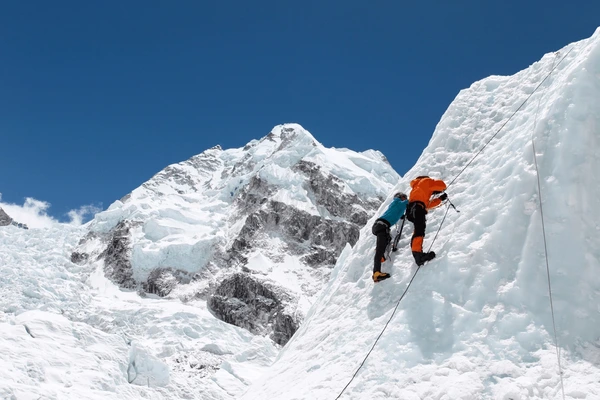
- See beautiful snow-capped mountains, lush valleys and meandering rivers.
- Study local settlements, the culture of the Sherpas and monasteries among other spiritual landmarks.
- The trails cater to easy terrains for complete beginners through challenging ones even for the most advanced who would like to throw up the challenge.
- Enjoy friendly and homely teahouse hospitality with a delectable array of cuisines adding taste and a memorable stay with memories worth remembering.
- You will be full of more confidence, firm with personal growth and accomplishment while building lifetime memories of the climbing goal overcome.
Popular Mountains to Climb in Nepal

Whether you seek an easy mountain to climb in Nepal or the highest mountain to climb in Nepal, you will find it here.
If a beginner, you might search for amateur mountains to climb in Nepal, and seasoned ones might try tougher peaks.
You can be awestruck at every step of the journey with breathtaking sceneries and friendly nature of the locals.
Which mountain do people climb in Nepal?
While most people associate Everest with mountain climbing in Nepal, several other peaks are less crowded yet equally beautiful.
The variety of Nepalese mountains is one factor that attracts people to this land.
In every season, new people come here to experience it for the first time in real life, so they can add more stories of their own successes to the rich climbing history of Nepal.
Beginner-Friendly Mountains in Nepal
The mountain ranges are excellent for first-time climbers.
These mountains have less elevation, easy trekking paths and help you learn basic climbing skills.
You can take the help of a mountain trekking agency in Nepal that shows you the right itinerary and the ropes.
Look at this list of easy-to-climb mountains:
- Mera Peak
- Yala Peak
- Island Peak
Most Challenging Mountains in Nepal
Experienced climbers can challenge their limits with the challenging mountains.
They are very high, steep and usually filled with ice.
Climbers need special training, top-quality gear and strong teamwork to conquer these mountains.
These are some mountains that you can try climbing to break your limits:
- Mountain Everest
- Annapurna I
- Ama Dablam
Restricted Mountains in Nepal
In Nepal, some mountains are completely closed or have strict rules regarding climbers.
These rules are not the same and often vary.
Some conditions are based on cultural and religious beliefs or just governmental action, simply aimed at saving the surroundings and the native populations.
“Machhapuchhre” popularly identified as Fishtail is one forbidden mountain to climb in Nepal.
Before you make your climbing plans, you should get information on recent regulations and lists of approved climbing from the Nepal Tourism Board or the Department of Tourism of Nepal.
Factors to Consider When Choosing a Mountain
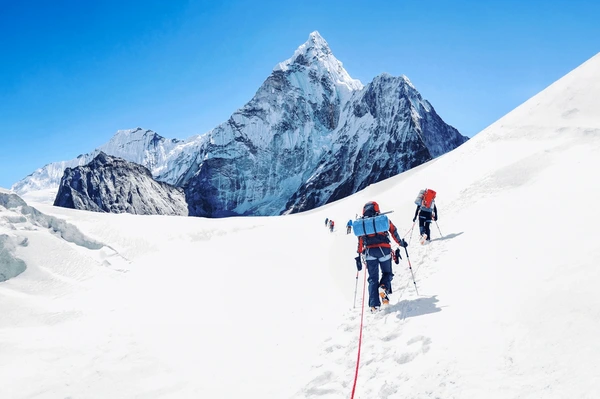
Before deciding which mountain to climb in Nepal, first you should consider your goal, fitness levels and the kind of experience you want.
Every mountain in Nepal is different and offers something unique.
Selecting the right mountain for climbing and mountain climbing agency will help enhance your enjoyment and safety.
The following are some factors to consider:
- Choose the right mountaineering agency to show you the way and hold ropes.
Ensure these companies have enough experience and reviews/testimonials of past mountain climbers.
- Check guides with experience, weather, trekking trails and rescue services availability.
- Your chosen mountain should be suitable for your experience and fitness level.
If you are a beginner, climb an easy mountain in Nepal, as the slopes are gentler and the requirements for technical skills are fewer.
- Consider your budget, how much money would you like to spend?
Some peaks are cheaper, helping save money on permits, gear and guide fees.
- Consider how much time you will give to the climb.
Whereas some mountains can be summited within a week, others will take as many as three weeks.
So, pick a peak that fits with your traveling schedule.
- Spring and Autumn are the optimal seasons to go mountain climbing in Nepal, so plan your climb accordingly.
In these periods, the weather is rather stable, making your climb safer and more pleasant.
- Various mountains require different permits.
A mountain climbing agency in Nepal will help you get the proper documents and understand the rules
Best Time to Climb Mountain in Nepal
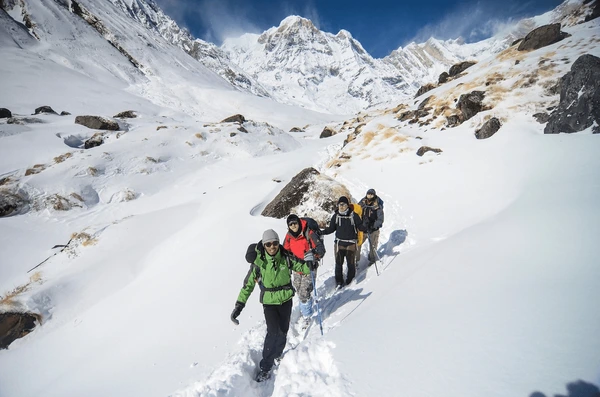
Choosing the right season can make a big difference in your mountain climbing experience in Nepal.
While conditions vary from one mountain to another, most climbers favor the clear skies and stable weather in Spring and Autumn.
In these seasons, trails are usually safer, temperatures are milder and visibility is much better for navigating high-altitude environments.
Spring
The daytime temperature is comfortable and the weather is stable, making it perfect for beginner as well as experienced climbers.
You can see the hillside coming alive with colorful wildflowers and rhododendrons, enhancing the beauty of your climbing expeditions.
The scenery is clear offering you chances to click stunning pictures.
Autumn
This season is another peak season for mountain climbing adventures.
Post-monsoon winds will blow away clouds, enabling you to perceive striking panoramas of the Himalayas.
Cooler weather eliminates fatigue during long ascents, enabling you to climb for longer periods.
Most climbers prefer autumn due to its reliable weather, that’s why you’ll find good infrastructure and support along popular routes.
Physical and Mental Preparation for Mountain Climbing in Nepal
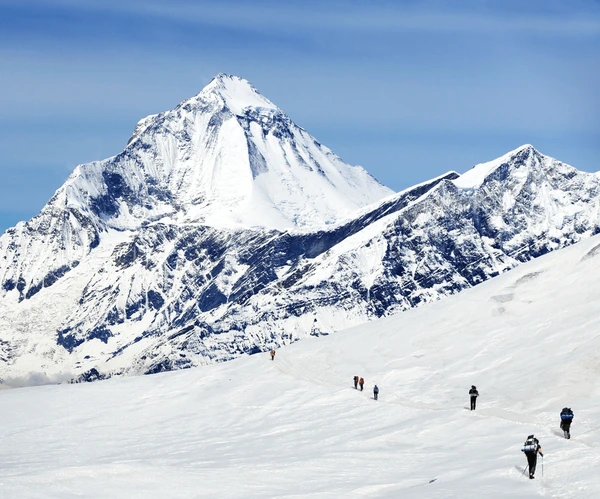
The peaks of Nepal demand you to be physically and mentally strong to summit them.
Here are some ways you can prepare yourself:
Physical Preparation
- Incorporate running, cycling or stair climbing to build endurance and strengthen your legs.
- Focus on core-enhancing and upper-body strengthening exercises to help handle the climbing gear and aid balance.
- Before attempting a Himalayan peak, practice hiking to higher altitude
- First do short, easy hikes with easier climbs and work up gradually to more challenging, strenuous ones that build on overall fitness and confidence in small, incremental steps.
Mental Preparation
- Break down the climb into small manageable steps and celebrate the attainment of each of those steps.
- Stay positive and encourage yourself when facing bad weather or even horrible terrain.
- Practice simple relaxation techniques, including deep breathing or visualization to help you remain composed under pressure.
Essential Gear for Mountain Climbing in Nepal

The right gear makes all the difference in preparing for mountain climbing in Nepal.
From sturdy boots to a reliable helmet, each piece of equipment helps you be safe, comfortable, and confident with every upward rise in the Himalayas.
Choosing gear for diverse terrain and weather conditions in Nepal means both a beginner and experienced climber can successfully summit any peak.
These are some gears you need for a smooth and successful summit:
- Warm layered clothing
- Mountaineering boots
- Crampons and ice axe
- Trekking poles
- Rainproof backpack
- Hydration system (water bottle)
- First aid kits and emergency supplies
- TIMS card and permits
- Climbing helmet
- Sunglasses
- Sunscreen and Lip care
- Oxygen cylinder
- High-energy snacks
- Headlamp
- Communication devices
- Travel Insurance
- Sleeping bag, rated for cold protection
- Navigation tools such as maps, compasses and GPS devices.
Permits for Mountain Climbing in Nepal
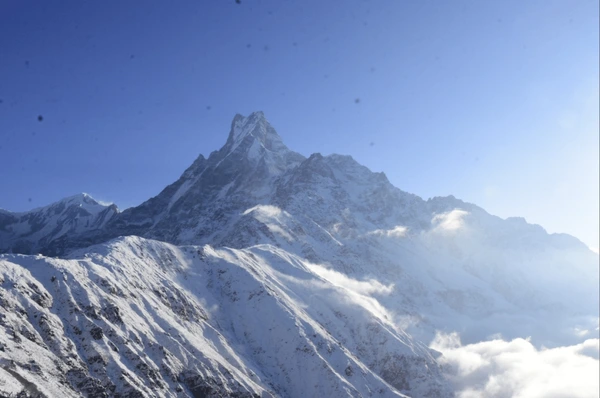
Before you start mountain climbing in Nepal, you must obtain the correct permits.
Issued by the Nepalese government, these climbing permits help to manage tourism and ensure the safety of climbers and the ecosystem.
Each trekking permit has specific rules, costs and guidelines that you must follow.
Specific Climbing Permit
Almost every mountain requires a different permit and has different costs, depending on the height and popularity of the peak.
The higher and harder the mountain, the more rigid the rules and the more expensive the costs are.
If you want to climb the popular Mount Everest, you require an Everest climbing permit.
Likewise, for every mountain, you need to have specific climbing permits.
TIMS Card
In addition to having a permit, most trekkers must obtain a TIMS (Trekker’s Information Management System) card.
With this card, authorities can easily track your location during emergencies.
Restricted Area
Some peaks and areas may be closed for cultural, environmental or security reasons.
Access to such places may require additional permits or special permissions.
National Parks are also one of those restricted areas, where you require permits to enter and explore.
Always check current regulations before planning.
Environmental and Cultural Consideration
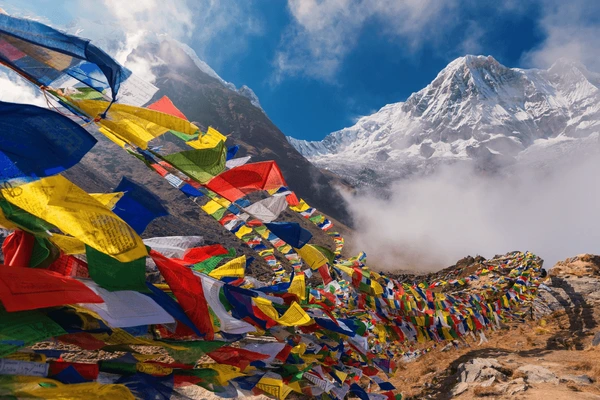
Climbing mountains in Nepal, you don’t merely reach summits of height but walk into sites of profound cultural and ecological significance.
Showing respect both to the land and people enhances the experience of your climb and guarantees the future of their beauty.
Protection of Environment
- Carry all the garbage along with you.
Make sure, you leave no empty bottles and no food leftovers are left behind.
- If you see animals, give distance to the animals.
Never feed or disturb them in any form.
- Go only on marked paths.
It may prevent damage to the plants or the soil.
Cultural Sensitivity
- Dress modestly while in villages and always ask for permission before taking pictures of people, religious sites or shrines.
- “Namaste” is the word the Nepali people use to greet each other.
Greetings in simple local dialects show respect and make for friendly contact with the communities you will encounter.
Supporting Local Communities
- Choosing locally-owned accommodations and buying local products economically helps the community.
- They have local knowledge and can be informative on culture and the environment.
Your business also supports their livelihood.
Peak Climbing vs Trekking in Nepal
| Aspects | Peak Climbing | Trekking |
| Focus | Reaching a high mountain, usually above 6,000 meters. | Sightseeing along various trails, valleys and foothills without necessarily reaching very high peaks. |
| Difficulty | More demanding, calls for strength, endurance and mountain climbing training in Nepal | Generally easier and suitable for varying fitness levels with less technical skills. |
| Permits and Costs | Often requires several permits and is more costly as you have to operate in conjunction with a mountain climbing agency based in Nepal is common. | Fewer permits and costs less, making it the best value. |
| Altitude | Higher elevation above 6000 meters. | Reach base camp around a max altitude of 5,500 meters. |
| Ideal for | For climbers looking to experience technical challenges and have the feelings of real mountain adventure in Nepal. | People visit Nepal just to enjoy its natural beauty and its culture, without extreme exertion. |
Final Words
Mountain climbing in Nepal is a journey of courage, discovery and transformation.
From the novice trails of Mera Peak to the legendary challenge of Mt. Everest, every forward step in the Himalayas beckons greatness.
You savor surreal visions, explore the depth of Sherpa culture and test yourself beyond what you imagine possible in such moments.
So long as you have dreamed about conquering the world’s highest peaks, now is already high time to get down to business.
Let Bold Adventure take you through safe and unforgettable climbs.
Having extensive support from experts, a detailed itinerary, and the most iconic peaks, we make every adventure as seamless as it could be thrilling.
Instead of reading, it’s best to experience it.
Book your mountain climbing adventure today with Bold Adventure and start the journey to the top of the world.
The Mountain Expedition Adventures calls, answer it now!
FAQs
1. What mountains do people climb in Nepal?
Nepal is home to the Himalayas, a shelter for famous peaks in the world, such as Mount Everest, Lhotse and Annapurna.
Some other famous mountains of Nepal for trekking are Mera Peak, Island Peak and Ama Dablam.
Each offers a different grade of difficulty along with scenic beauty.
2. What mountain is the easiest to climb?
Many people consider Island Peak and Mera Peak the easiest mountain to climb.
3. How many mountains are open to climb in Nepal?
There are hundreds of mountains open for climbing in Nepal.
The exact number can change due to changing regulations, but climbers can usually choose from more than 300 officially approved peaks.
Always check the latest government lists or consult a mountain climbing agency in Nepal for the most current information.
4. Do I need a permit to climb the mountains??
Yes, you need permits to climb almost every mountain in Nepal.
Additionally, you require a TIMS card and even a restricted area permit if applicable.
5. What are the 8 most famous mountains of Nepal?
The 8 most famous mountains of Nepal are:
- Mount Everest
- Kangchenjunga Himal
- Mount Lhotse
- Mt Makalu
- Cho Oyu
- Dhaulagiri
- Manaslu
- Mount Annapurna I
All of these peaks are above 8,000 meters altitude from sea level.
6. How long does it take to climb Mount Everest?
With our Everest Expedition package, it will take 61 days to climb Mt Everest and conclude the journey.
The day includes a flight to Lhasa, trekking, acclimatization, establishing several camps at higher altitudes, waiting for good weather and finally, the summit push.
Duration for each expedition can vary slightly according to the weather, route conditions and individual team strategies.
7. What mountain is not allowed to climb in Nepal?
Mount Fishtail, also called Machhapuchhre, is not allowed to be climbed in Nepal.
8. Does mountain climbing cater to a vegan, vegetarian or other dietary preference?
Of course, mountain climbing in Nepal caters to vegan, vegetarian or other dietary preferences.
However, it is advised to communicate with your mountain climbing company, regarding your requirements and preferences.
9. Why are sunscreen and sunglasses crucial for mountain climbing?
High altitudes mean stronger UV rays, even when it’s cold.
Sunscreen protects your skin against bad sun damage and painful sunburn.
Sunglasses shield your eyes from bright glare and high levels of UV, preventing snow blindness and possible long-term damage to vision.
10. Is there any access to the telephone while climbing mountains in Nepal?
The access to the telephone becomes limited or unavailable, the more you ascend.
You may find basic phone connectivity along popular routes in some places.
Most climbers in Nepal use satellite phones or PLBs as communication devices during peak climbing because these devices work in areas where traditional cell phone signals don’t work.
11. Is Travel Insurance a must for climbing mountains in Nepal?
Yes, travel insurance is highly recommended for climbing mountains.
The risks of high-altitude climbing involve altitude sickness, injuries and sudden weather changes.
You must ensure your insurance covers emergency evacuations, medical care or any other unexpected costs to prepare for whatever challenge this trip to the peak could cause.

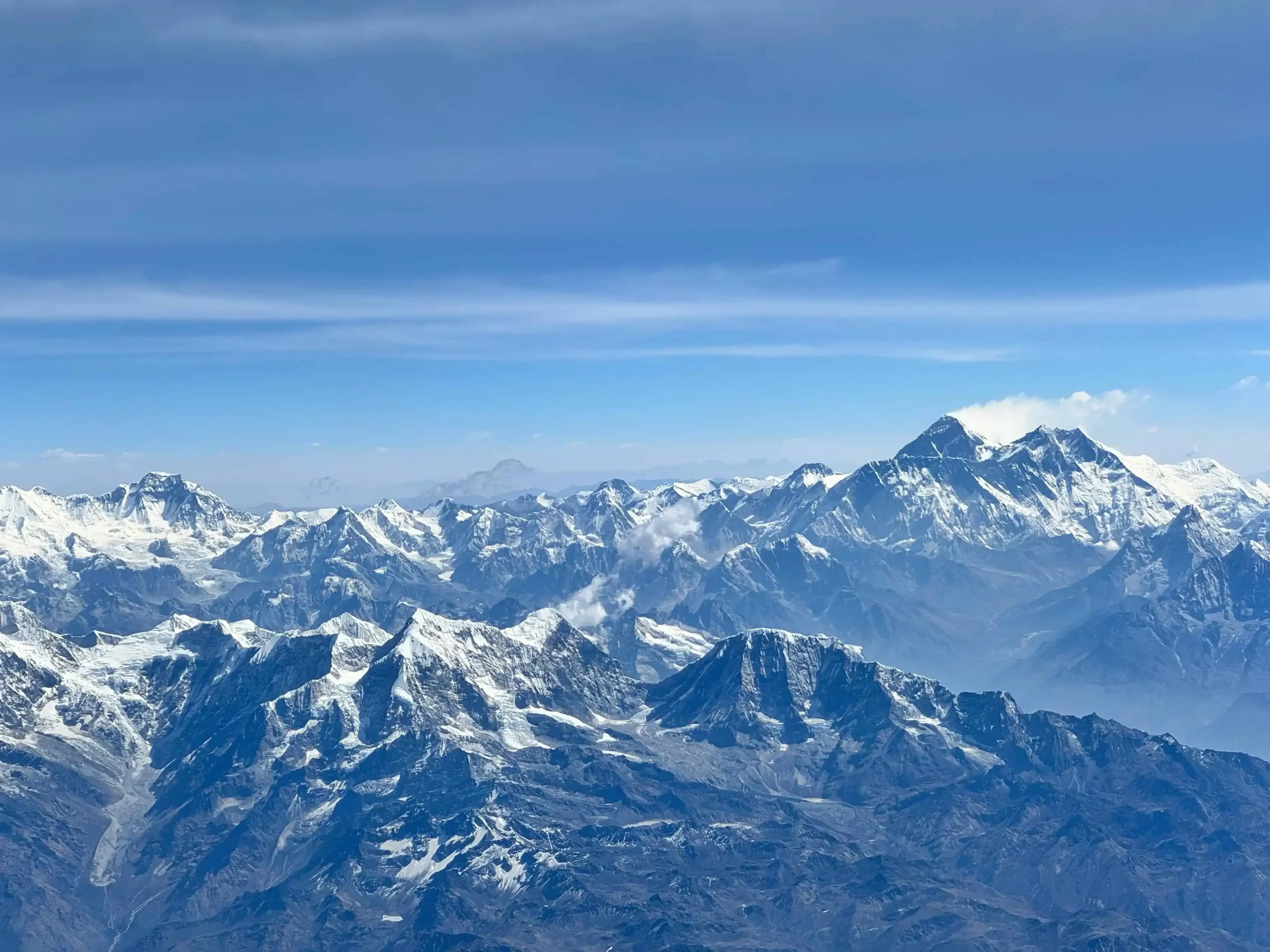
Recent Comments